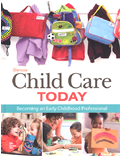
Child Care Today ©2012Chapter 6: Observation SkillsChapter SummaryEarly childhood educators constantly observe children. This information is used to develop curriculum, understand child development, assess skill development, and identify special needs. Observers should do their best not to influence the activities they observe. Observation records must remain confidential. It is important to keep facts separate from personal opinions, preferences, or bias. Objective observations require that you record only what you actually see happen, not what you hear about secondhand. Early childhood educators look for patterns in observations and draw conclusions about causes and meanings of behaviors. There are a variety of observation methods. In naturalistic observation, a participant observer interacts with children while observing. Other observation methods include checklists, anecdotal records, running records, frequency counts, and rating scales. To determine overall development, children should be observed in a variety of situations over time. Look for clues to physical, intellectual, social, and emotional development through behavior. Observation records should be organized and filed for future reference. Collected samples, called portfolios or authentic assessments, can be used to illustrate a child’s development. |  |















